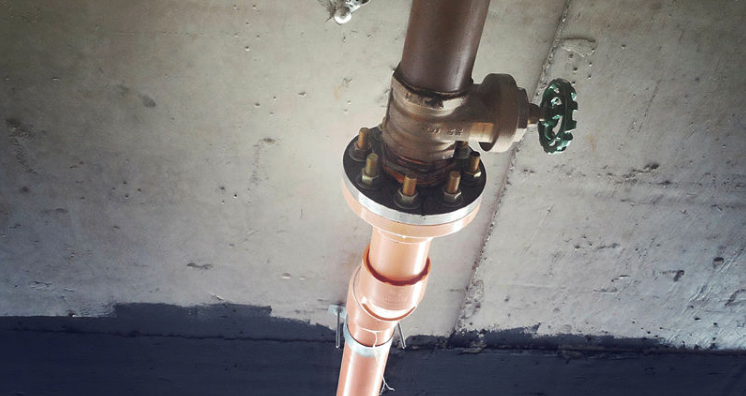How Pipe Size and Material Impacts the Cost and Performance of a Fire Sprinkler System
CPVC, steel and PEX are common materials used for fire sprinkler systems. Their unique material thicknesses and smoothness ratings both affect cost and flow rates.
BlazeMasterⓇ CPVC pipes, produced in SDR 13.5 dimensions with a Hazen-Williams C factor of 150, can improve the performance of your system and lower costs. BlazeMaster CPVC has stable pricing, a smooth surface, resists the effects of microbiologically influenced corrosion (MIC), and has an easy, cost-effective installation process.
Understanding Pipe Sizes
Different piping materials are measured differently, which can make it difficult to make true comparisons. SDR, or standard dimensional ratio, means the pipe wall thickness is directly proportional to the outside diameter. This results in consistent pressure capabilities across all diameters. BlazeMaster CPVC pipe is produced in SDR 13.5.
PEX, which is only listed for use in NFPA 13D systems in single family homes, is produced in SDR 9. It has thicker walls than BlazeMaster CPVC, but has lower pressure bearing capabilities.
CPVC and steel come in iron pipe size, and PEX in copper tube sizing. The pipe’s outer diameter is smaller in copper tube sizing, even if it’s the same listed dimensions as iron pipe size. For example, a ¾ in. piece of copper-tube-sized pipe has a smaller internal diameter than a ¾ in. piece of iron-tube-sized pipe. Therefore, PEX piping needs to be upsized to achieve the same flow rate as CPVC or steel.
Material Thickness Impacts Cost
Less material typically correlates to lower cost, which is why CPVC systems offer substantial cost savings. The most significant savings occur when using BlazeMaster CPVC pipe sizes below 2 inches instead of steel.
Depending on the building structure and the amount of pipe used, we estimate up to 30% cost savings on material and labor when installing a BlazeMaster Fire Sprinkler System instead of a traditional all-steel solution.
Steel is a commodity, which means its price fluctuates unexpectedly. This makes prices difficult to predict, especially in long-term projects.
Installation Differences Between CPVC, PEX and Steel
Installation—including time and labor—impacts the overall cost of a fire sprinkler system, too.
BlazeMaster fire sprinkler systems are solvent cement welded. Solvent cement joins pipes and fittings at the molecular level without the need for a hot work permit, highly-skilled laborers or expensive equipment, resulting in overall cost savings. And, a solvent-cement-welded joint becomes the strongest part of the system.
PEX uses a press system for installation, which requires expensive tools and is more labor-intensive than solvent cement welding.
Steel is the most labor-intensive of the three materials and requires a skilled hand to avoid beading. Highly skilled laborers come with a price tag to match. The specialized equipment required to weld steel often means systems need to be prefabricated off site, which can result in project delays.
Flow Rates and Their Impact on Long-Term Savings
The hydraulic calculation method, which uses the Hazen-Williams formula, determines actual pressure loss based on the length of pipe and internal friction loss. The higher the Hazen-Williams C factor, the smoother the piping surface.
Smooth piping surfaces can achieve equivalent flow rates with a narrower internal pipe diameter. It can mean using smaller pipe and fewer sizes of pipe, which saves on material cost. The C factor ranges from 100 for unlined cast iron and dry steel systems to a high of 150 for BlazeMaster CPVC Pipe.
Steel piping has a C factor of 120 when new, but can decrease to as low as 60-80 after years of pitting and scaling. The material becomes rough and requires piping system maintenance to maintain its integrity.
The flow rate of a BlazeMaster CPVC piping system remains more consistent throughout the life of the system because the material better resists MIC compared to most alternatives. This improves productivity and limits downtime over the years, and in some cases means considerable cost savings by downsizing the piping system at the outset. With a smaller pipe comes increased energy savings, as less energy is required to move the fluid through the pipe.
Contact a BlazeMaster Fire Protection Systems consultant to learn more about how a CPVC system can deliver cost savings and reliability.


